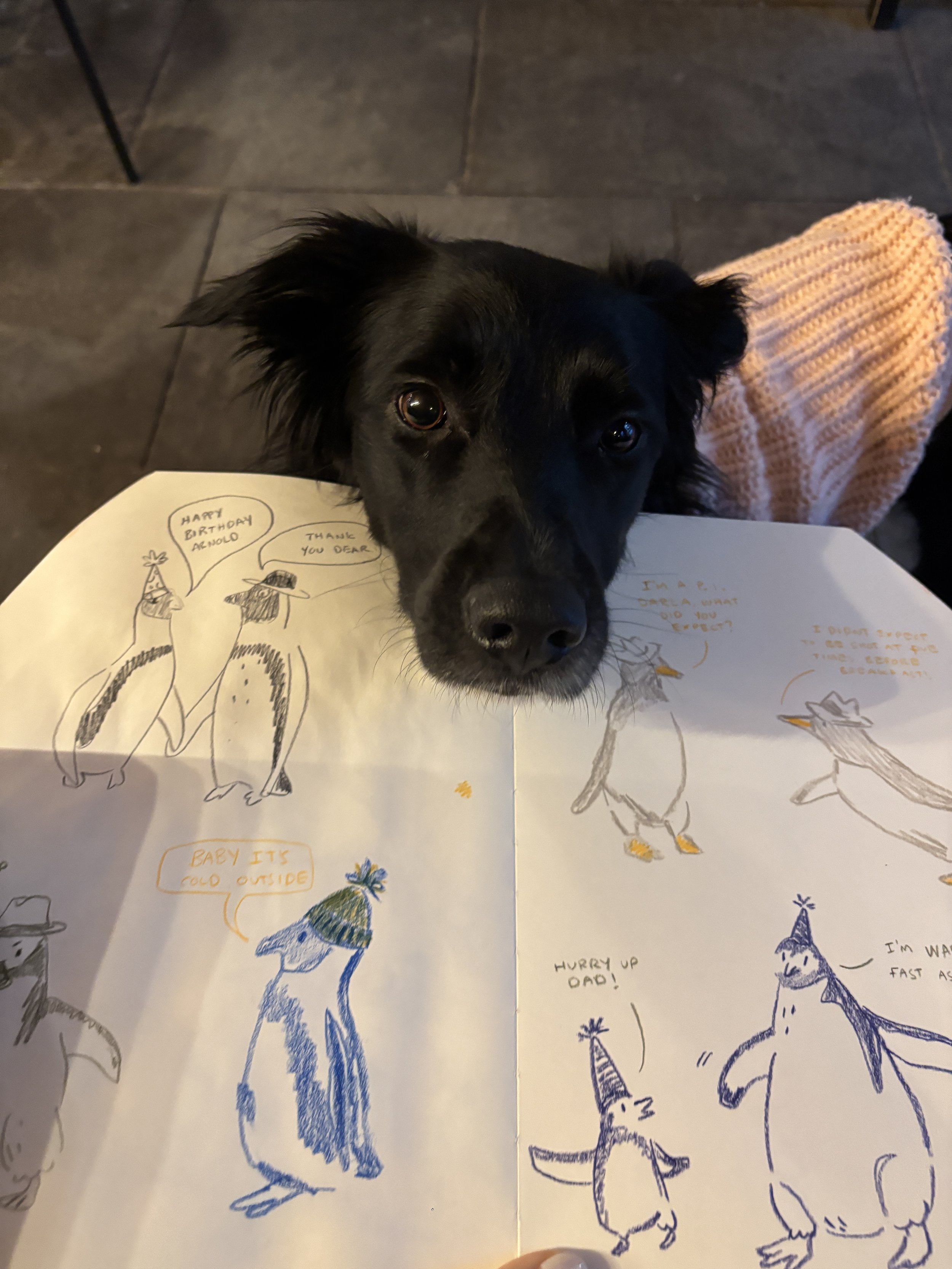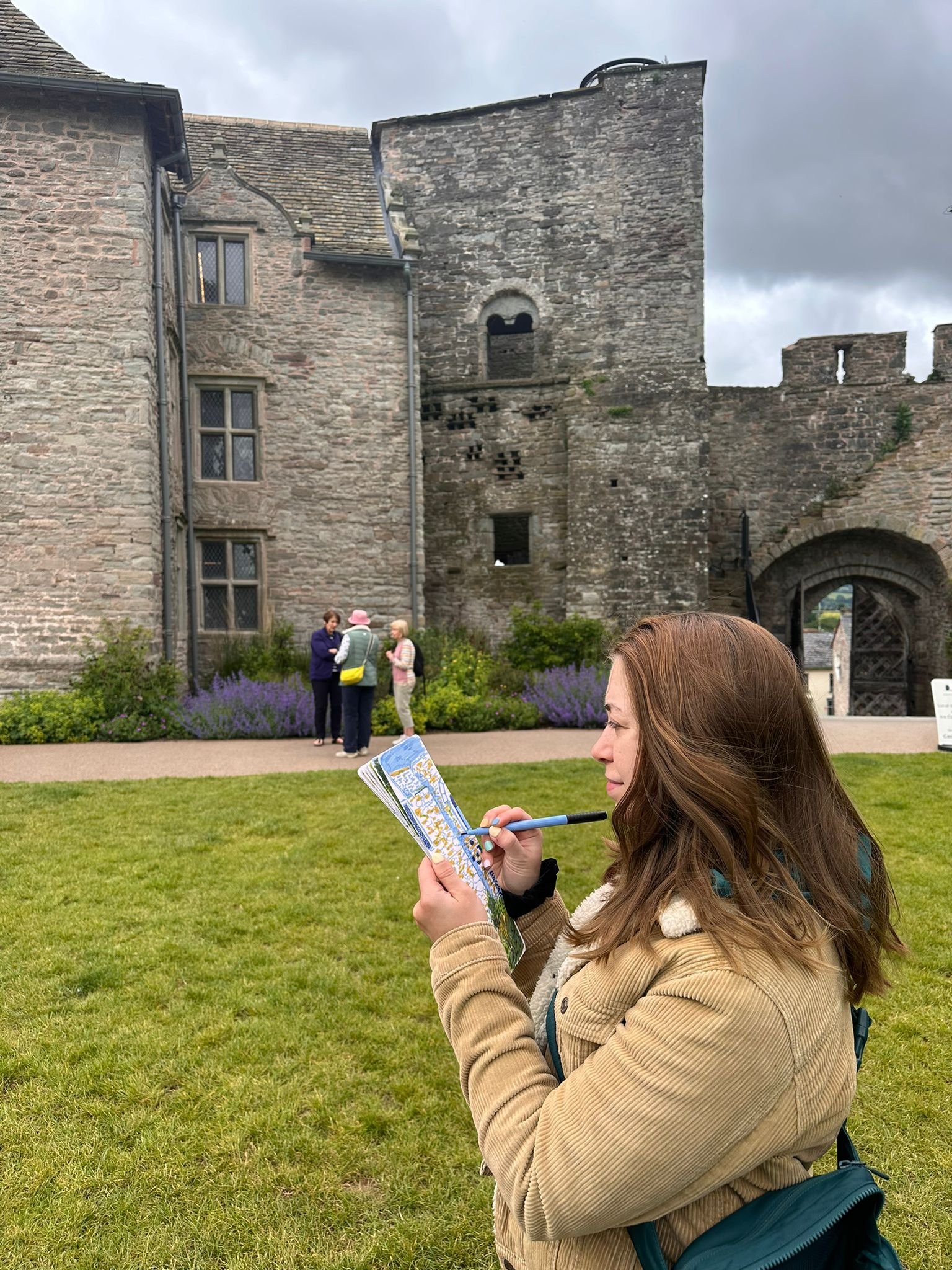How Sketchbook Play Became the Key to Unlocking My Artistic Growth
In 2024, I finally allowed myself to make ‘bad’ art
Image: Sketchbook pages made from
observing master works in the
Kelvingrove art gallery
- Glasgow
For years, I couldn’t make ‘bad’ art. I didn’t even know what ‘bad’ art looked like, or if it was allowed in my creative practice.
I saw other artists exploring and playing and to my eyes even their ‘ugly’ experiments were captivating and visually interesting, but in my own such experiments I could only focus on how ‘ugly’ they were.
My sketchbooks were full of blank pages, untouched, taunting me with their untapped potential that I couldn’t seem to push myself towards for fear of making something ‘ugly’ that would confirm my worst fears; “see, you’re not good enough to be an illustrator” is what I was fairly certain the hideous experiments would say to me if they could speak.
I couldn’t seem to shake the constant pressure of making everything perfect, even in the early stages of a project. I was stuck in a cycle where my art had to be polished, refined, and without mistakes from the very beginning, and it wasn’t until I learned to embrace the messy, imperfect process of sketchbook play that everything started to change.
I now realise that it wasn’t about making ‘bad’ art at all, but about giving myself permission to experiment, to play, and to make mistakes. Once I started doing this, I noticed a transformation—not only in my sketchbook practice, but in my finished pieces as well. My work became more authentic, more visually exciting, and more me. The space to make mistakes and explore new techniques gave me a freedom I hadn’t anticipated, and I’ll admit, it’s been one of the most rewarding aspects of my artistic journey.
Let me take you through the process of how I found this balance, and how it has helped me evolve as an artist.
The Pressure of Perfectionism
Growing up, I was always a perfectionist. I thought of my sketchbook as a space for finished pieces, not for experiments or mistakes. It was almost as if each page had to showcase something worthy of being in a portfolio, and the idea of producing something ‘bad’ or unfinished felt like a personal failure. As a result, I spent a lot of time staring at blank pages, unable to get started, knowing that anything I put down had to be just right.
This made it incredibly difficult to create freely, and I quickly realised that I was stifling my own growth. Without space to fail, I was unable to push boundaries, try new techniques, or even allow myself to be playful. I had become a bit trapped in my own desire to ‘get it right,’ and that desire was stalling my creativity.
Joining Sketchbook Sessions
Image: Sketchbook spread from a fun session
on Emma Carlisle’s Patreon drawing ‘penguins in hats’ (I joined this live zoom from a cafe and Evie came with me!)
The turning point came when I started participating in structured sketchbook sessions. I signed up for Emma Carlisle’s Patreon and following along with Katie Moody’s YouTube workshops, both of which were focused on breaking down the intimidation of the blank page and encouraging artists to experiment in their sketchbooks without judgement. It was through these sessions that I started to realise just how much freedom comes from making mistakes, from not caring about the outcome of each drawing.
Emma’s Patreon, in particular, offered a variety of prompts and challenges, all aimed at encouraging playful, loose drawing. The structure gave me a framework, but it was the permission to step outside of my usual style and to embrace unpredictability that was transformative. The exercises forced me to stop worrying about making something ‘perfect’ and allowed me to focus more on mark-making and texture.
Katie Moody’s YouTube sessions were equally valuable. Her relaxed approach to sketchbook play and her focus on process over product was incredibly freeing. Watching her embrace imperfections and explore new mediums with such enthusiasm made me realise that the beauty of art isn’t in perfect execution, but in the energy and intention behind it. Her tutorials were a reminder that play isn’t a luxury, but an essential part of the creative process.
What I found in both of these resources was a community of artists who were also letting go of perfectionism. It was comforting to realise that I wasn’t alone in feeling the pressure to get things ‘right’ all the time, and seeing others take risks and make mistakes gave me the courage to do the same.
In-Person Sketchbook Sessions
Image: A sketchbook spread
from a ‘sketch and cafe’ session
The shift in my sketchbook practice really gained momentum when I started attending in-person sketchbook sessions. One of the most significant of these was Sketch and Café, a monthly sketching group in Manchester. This space allowed me to draw alongside other artists in a relaxed, non-judgmental environment. We would gather at a local café, sketch from the surroundings, and share our sketches at the end. It was the perfect opportunity to experiment with new techniques and styles without the pressure of producing something ‘finished.’
One of the things I love most about Sketch and Café is the emphasis on quick, playful drawing. We weren’t expected to create anything polished or highly detailed. Instead, we focused on capturing the essence of what we saw in front of us, using simple lines, loose marks, and playful sketches. It was a perfect antidote to the perfectionist tendencies I had been holding onto for so long. The group was a constant reminder that sketchbooks are for exploration, not for creating final pieces.
This approach became incredibly liberating. In the space of a few hours, I would experiment with colour, texture, and composition in ways that felt natural and unforced. Sometimes the drawings didn’t work out, but that was okay.
The process was what mattered. I wasn’t just making art; I was engaging with my materials, exploring new ways of seeing, and testing the limits of my creativity. The results were often surprising, and that surprise is something I now crave in my work.
Finding New Sources of Inspiration
Image: Observational drawing at the castle of Hay-on-Wye
One of the other big changes in my practice has been how I source references. For years, I relied on Google Images for everything, endlessly scrolling for the perfect photo or inspiration. But after I started embracing sketchbook play, I realised that this process of endless searching was both draining and limiting. I was often too caught up in finding the ‘right’ reference that I’d spend more time looking at images than actually drawing.
To combat this, I decided to expand my reference pool. I started visiting galleries, drawing on site, watching films, and browsing old informational books on British naturalism. The beauty of these sources is that they’re rich with texture, detail, and atmosphere that you don’t often find in the clean, digital images of the internet. They feel more real. There’s something about holding a physical book or seeing an artwork in person that makes the experience of drawing feel more authentic.
Drawing on site my drawings always feel more ‘alive’ and dynamic.
These sources provided me with a more varied and nuanced understanding of nature, animals, and anatomy, which has fed directly into my work.
Not only has this expanded my creative vocabulary, but it has also taken the decision-making process out of the equation. Instead of spending hours scrolling through Google, I now have a set collection of references that I trust and enjoy in my refrence books. This has saved me an incredible amount of time, allowing me to focus more on the act of drawing and less on the endless hunt for the perfect reference image. It also challenges me to use my imagination as most of the time I can be drawing a pose or scene from several reference images rather than looking for one thats EXACTLY what I had in mind. the finished artwork is a cobbled together drawing of a few tatty references plus whats in my head.
What’s more, I’ve started incorporating elements from these references in a more interpretive way. I’m no longer looking for exact representations; instead, I take the textures, shapes, and moods from my reference materials and allow them to inform my work. My drawings feel more grounded in the world around me, and I’ve learned to capture details that I might have overlooked before.
The Freedom to Make Mistakes
Image: Reflecting on my
sketchbook work from 2024
Perhaps the biggest gift that sketchbook play has given me is the ability to embrace mistakes.
I no longer view errors or imperfections as failures, but as opportunities to learn and grow. Whether it’s a line that goes too far, a colour that doesn’t quite work, or a mark that doesn’t land the way I expected, I’ve come to appreciate how these ‘mistakes’ shape my process.
Making mistakes is what leads to discovery. If I didn’t make them, I wouldn’t be able to explore new ways of mark-making, or push the boundaries of my creativity. And the best part is that these lessons have translated into my finished pieces. My polished work is more dynamic, more visually interesting, and more authentic because I’ve given myself the freedom to experiment, to fail, and to try again.
The marks I make in my sketchbook—whether bold, messy, or unrefined—are now part of my artistic identity. I don’t shy away from them anymore; instead, I celebrate them. I’ve realised that the tension between polished and rough, finished and unfinished, is where the magic happens. The energy of the sketchbook is what breathes life into the final piece.
A More Authentic and Visually Interesting Practice
Looking back, I can see just how much my approach to sketchbooks has shaped my overall practice. By allowing myself the space to play, I’ve discovered new ways of making marks, new techniques, and new visual languages that I can bring into my polished work. It’s no longer about producing perfect, highly controlled pieces—it’s about injecting energy, emotion, and personality into every line I draw.
My sketchbooks have become a playground, a space where I can test new ideas and make discoveries. But they’ve also become a vital part of my artistic process. Without this space for experimentation, my final pieces would feel less alive, less personal, and less authentic. Sketchbook play has become the foundation of everything I do, and I can’t imagine creating without it.
If you’re struggling to let go of perfectionism or feeling stuck in your creative practice, I hope my journey can serve as a reminder that it’s okay to make mistakes. In fact, it’s essential. Trust the process, give yourself permission to explore, and remember that the messy, imperfect work you create in your sketchbook is just as important—if not more so—than the polished pieces you share with the world.
Image: A sketchbook spread from my own ‘The roaches’ notebook you can find in the shop! - I love sketching in this thing, it’s perfectly sized for my handbag and I get a little buzz each time knowing I MADE that :)





